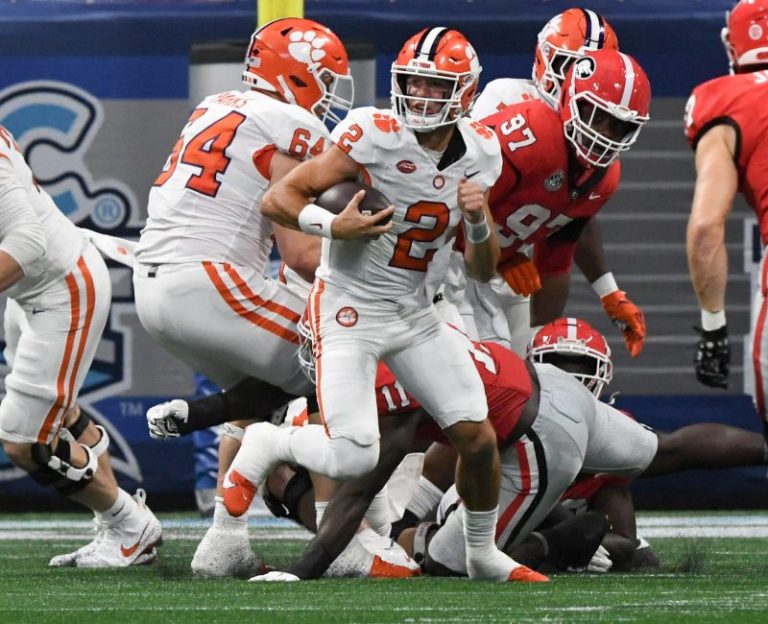There are more than 14,000 college football players at the Bowl Subdivision level, but only one person can join the elite fraternity of Heisman Trophy winners.
Even with all of the elite players in the sport, it can be tough to predict who will the sport’s top individual award, as several factors like stats, team success and highlight reel moments play a role in getting the top vote.
In order to figure out who are the top choices to win the Heisman, USA TODAY Sports turned EA Sports College Football 26 by simulating the 2025-26 season 100 times to see who wins the trophy.
People will notice a trend in the simulated Heisman Trophy results. The betting favorites to win the award most often took it in the video game. But often in the real world, someone emerges out of nowhere into the national spotlight and has a dazzling season toward the honor, and it happened in the simulation.
Most Heisman Trophy wins in College Football 26 simulation
Clemson quarterback Cade Klubnik won the Heisman Trophy the most with 31 wins in 100 simulated seasons.
Which players won the Heisman Trophy in College Football 26 simulation
A total of 24 players won the Heisman Trophy in the simulation. Eleven were quarterbacks, four were running backs and nine were receivers. The winners ranged across college football from the Power Four to Group of Five schools. The winners include:
Cade Klubnik: Clemson quarterback
Julian Sayin: Ohio State quarterback
Byrum Brown: South Florida quarterback
Behren Morton: Texas Tech quarterback
Kevin Jennings: SMU quarterback
John Mateer: Oklahoma quarterback
Jayden Maiava: Southern California quarterback
Gunner Stockton: Georgia quarterback
Braylon Braxton: Southern Mississippi quarterback
Joey Aguilar: Tennessee quarterback
Fernando Mendoza: Indiana quarterback
Makhi Hughes: Oregon running back
Jeremiyah Love: Notre Dame running back
Isaac Brown: Louisville running back
Terion Stewart: Virginia Tech running back
Jeremiah Smith: Ohio State receiver
Zachariah Branch: Georgia receiver
Ryan Williams: Alabama receiver
Braylon Staley: Tennessee receiver
Bryant Wesco Jr.: Clemson recevier
Tyler Brown: Clemson receiver
Dillon Bell: Georgia receiver
Romello Brinson: SMU receiver
Kole Wilson: Baylor receiver
College Football 26 Heisman Trophy simulation breakdown
Here is how many teams each player won the Heisman Trophy:
Cade Klubnik: 31
Jeremiah Smith: 18
Zachariah Branch: 9
Makhi Hughes: 6
Julian Sayin: 5
Byrum Brown: 4
Behran Morton: 3
Kevin Jennings: 3
Ryan Williams: 2
John Mateer: 2
Jayden Maiava: 2
Gunner Stockton: 2
Braylon Braxton: 2
Braylon Staley: 1
Bryant Wesco Jr.: 1
Joey Aguilar: 1
Fernando Mendoza: 1
Jeremiyah Love: 1
Isaac Brown: 1
Terion Stewart: 1
Tyler Brown: 1
Dillon Bell: 1
Romello Brinson: 1
Kole Wilson: 1

